
Introduction:
After a while all graphics cards seem to blend together. Most are just the reference design with a company logo on it. For the most part they all perform the same. That’s why it’s so refreshing when a company does something different with their cards. Sapphire, one of the largest manufacturers of graphics cards, introduces their new HD 6950 FleX edition card. While the speeds of the cards may be stock 6950, Sapphire makes this card stand out by enabling it to run 3 monitors in an Eyefinity setup without the need for expensive Display Port monitors or adapters. While the FleX brings a cool trick to the table, does it have what it takes to run today’s games? Only reading on will give you the answer.
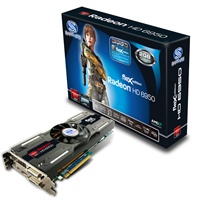
Sapphire’s Take:
Most graphics cards based on AMD technology require the third monitor in an Eyefinity set-up to be a DisplayPort monitor, or connected with an active DisplayPort Adapter. The SAPPHIRE FleX family can support three DVI monitors in Eyefinity mode and deliver a true SLS (Single Large Surface) work area without the need for costly active adapters. The first two monitors are connected to the two DVI ports and the third to an HDMI to DVI cable (supplied) with no extra hardware required.
The SAPPHIRE HD 6950 FleX is now the highest performing card with this feature, allowing gamers to use low-cost DVI monitors for all three screens. Additional monitors can be added to the setup, but must be DisplayPort connected.
Like the standard HD 6950, the SAPPHIRE HD 6950 FleX Edition boasts true DX 11 capability and the powerful configuration of 1408 stream processors and 88 texture processing units. With its clock speeds of 800MHz for the core and 1250Mhz (5 Gb/sec effective) for the memory this model brings multi-screen enjoyment to even hard-core gamers.
Specifications:
| Output | 1 x Dual-Link DVI 1 x HDMI 1.4a 2 x Mini-DisplayPort 1 x Single-Link DVI-D DisplayPort 1.2 |
| GPU | 800 MHz Core Clock 40 nm Chip 1408 x Stream Processors |
| Memory | 2048 MB Size 256 -bit GDDR5 5000 MHz Effective |
| Dimension | 270(L)x110(W)x40(H) mm Size. |
| Software | Driver CD SAPPHIRE TriXX Utility |
| Accessory | CrossFire™ Bridge Interconnect Cable DVI to VGA Adapter Mini-DP to DP Cable 6 PIN to 4 PIN Power Cable x 2 HDMI to SL-DVI Adapter HDMI 1.4a high speed 1.8 meter cable(Full Retail SKU only) |
Packaging:
| Box Front | Box Back |
The outside of the box is pretty standard fare for graphics cards. Nothing truly amazing to behold here.
Inside is where things start to get interesting. We get our first glimpse at Sapphire’s redesigned cooler. The cables that Sapphire includes are everything that you should need to start running 3 monitors right out of the box. I like that they include the CrossfireX bridge with the card.
The card requires 2 6-pin PCIE connectors to get it up and running. That’s modest considering some of the other energy hog cards out there. On the front plate we can see all five of the connectors that will plug into your many monitors.
A Closer Look:
The new Cayman line of card from AMD feature a pretty serious architecture overhaul. Without going into too much detail, AMD decided to reduce the size of their instruction pipeline. This was done after researching that most games don’t fully utilize the pipeline per clock cycle. By reducing the pipeline, they were able to stuff more SIMDs onto the die. This allows the card to execute more threads at once and therefore run faster. A few more under the hood improvements allow the card to be more efficient at general GPU computing.
Instead of rebranding the reference design from AMD, Sapphire opts to mix things up a bit. The first thing they did was ditch the stock cooler and implement one with a more efficient and quieter design. The cooler that they install, positioned right over the GPU, is able to blow air out both the front and back of the card, allowing it to dissipate heat faster than the stock blower fan that normally sits at the rear of the card. Like the other reference design cards, the FleX edition has a dual BIOS switch, which means it may have the capability to unlock the shaders that have been blocked off, making it into a full fledged 6970. During our testing, we found the card to run extremely cool compared to the reference design. Under full load, the card barely peaked 60 C on average. For comparison, the reference cards are averaging in the 80’s C under full load. This leaves a lot of head room for potential overclocking.
Test Setup:
- In Win Ironclad Case
- MSI Big Bang XPOWER Motherboard
- Intel Core i7-920
- Thermaltake Frio CPU Cooler
- Ultra X4 1050 Watt Power Supply
- Crucial 128GB SSD Solid State Hard Drive
- Windows 7 x64 Service Pack 1
- Catalyst 11.4 Preview Drivers (as per the manufacturer’s request)
PCMark Vantage:
PCMark Vantage is a great benchmark when you want to get a feel for an entire system. It takes all elements of the system into consideration when it creates its score (CPU, hard drive, RAM, graphics card). For all of the Futuremark benchmarks, the settings were kept at the standard performance defaults. This allows us to make comparisons to most systems that run the benchmarks.
 We can see that the whole system gets a score of 12990, while the gaming section scores a 15568. While the other parts in the rig contribute greatly to the score, the 6950 definitely pulls its weight.
We can see that the whole system gets a score of 12990, while the gaming section scores a 15568. While the other parts in the rig contribute greatly to the score, the 6950 definitely pulls its weight.
3DMark 06:
While an older benchmark, 3DMark 06 still has some relevance. It is used to test out the DirectX 9 capability of a card. It helps show just how far the performance of graphics cards has come over the years.
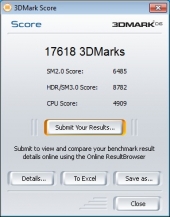 While pretty much no new games are made exclusively with DirectX 9, we can see that the 6950 still handles it like a champ. With a score of 17618, the card blows right through the test. It is important to note that the DirectX 9 performance, and therefore the 3DMark 06 score, might be lower than some of the other competing cards, this is due to the architecture change. Most games that are written solely in DirectX 9 are going to be running incredibly fast (think upwards of over 100 FPS) anyways, so it shouldn’t affect anything.
While pretty much no new games are made exclusively with DirectX 9, we can see that the 6950 still handles it like a champ. With a score of 17618, the card blows right through the test. It is important to note that the DirectX 9 performance, and therefore the 3DMark 06 score, might be lower than some of the other competing cards, this is due to the architecture change. Most games that are written solely in DirectX 9 are going to be running incredibly fast (think upwards of over 100 FPS) anyways, so it shouldn’t affect anything.
3DMark Vantage:
3DMark Vantage has now been replaced by 3DMark 11. There are still plenty of games out right now that use DirectX 10. Vantage helps show the DirectX 10 performance of the card.
 We can see the 6950 weighing in at 17650 for the overall score. For just the GPU it’s 17701. This is an impressive score that definitely puts the card at the higher end of graphics cards out there.
We can see the 6950 weighing in at 17650 for the overall score. For just the GPU it’s 17701. This is an impressive score that definitely puts the card at the higher end of graphics cards out there.
3DMark 11:
This is Futuremark’s new synthetic benchmark, set to replace 3DMark Vantage. It tests out all of the new features that DirectX 11 has to offer, including volumetric lighting and tessellation.
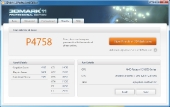 We can see a performance score of 4758. While 3DMark 11 has an extreme mode, it’s not really worth testing unless you have more than 1 graphics card. Anything shy of a multi-GPU setup just runs at a crawl.
We can see a performance score of 4758. While 3DMark 11 has an extreme mode, it’s not really worth testing unless you have more than 1 graphics card. Anything shy of a multi-GPU setup just runs at a crawl.
Unigine Heaven 2.5:
Heaven Benchmark is a DirectX 11 GPU benchmark based on the advanced Unigine engine from Unigine Corp. It runs through a high stress scene that makes full use of tessellation, all the while recording the FPS.
| 1920X1080 | 5040X1050 – Eyefinity |
For this benchmark we were able to run it at the standard resolution of 1920X1080 and at the extended Eyefinity resolution of 5040X1050. We can see that at the normal resolution the 6950 comes in at a very playable 38.1 FPS, while it starts to struggle when you span it across 3 monitors. While it may look nicer spanned across all monitors, you will take a performance hit for it.
FurMark:
FurMark is an OpenGL benchmark that is used as a stress test and as a benchmark for graphics cards. The scene looks like a floating doughnut covered in fur.
 We can see that the 6950 FleX scored 2233. This is quite impressive. One of the most interesting things is that the temperature of the card never went above 76 C. This was also run in a room that had less than ideal air conditioning at the time. That’s a true testament to the cooling solution that Sapphire has implemented.
We can see that the 6950 FleX scored 2233. This is quite impressive. One of the most interesting things is that the temperature of the card never went above 76 C. This was also run in a room that had less than ideal air conditioning at the time. That’s a true testament to the cooling solution that Sapphire has implemented.
LuxMark:
LuxMark is an OpenCL benchmark that can help give an apples to apples comparison between Nvidia and AMD graphics cards. It renders a scene and then displays a score depending on how quickly it finishes. It has the option to use both GPU and CPU to render the scene or any combination of the two. For our testing we just used the GPU to render the scene.
With the scene being rendered on just the GPU, the 6950 FleX was able to score a 5521. This benchmark can help give an idea of the GPU computational power that a graphics card has. This is a big deal for people developing massively parallel computing systems.
Alien vs Predator:
Based on the popular movie franchise, this game offers a DirectX 11 benchmark for us to test out our card.
Texture Quality: 2
Shadow Quality: 3
Anisotropic Filtering: 16
SSAO: ON
Vertical Sync: OFF
DX11 Tessellation: ON
DX11 Advanced Shadows: ON
DX11 MSAA Samples: 1
| Resolution: | 1920X1080 | 5040X1050 |
| Number of frames: | 5825 | 3214 |
| Average Frame Time: |
18.0ms | 32.6ms |
| Average FPS: | 55.6 | 30.7 |
At the normal resolution, the scene plays with no problem. With the Eyefinity enabled, it’s still playable, but can be jumpy in high action sequences.
Civilization V:
The new edition in the Civilization series features DirectX 11 and a builtin benchmarking tool for our testing pleasure. We ran the leader benchmark which renders out all of the leader scenes and records the average FPS. We ran into issue with running this in Eyefinity, so we only have the results for 1920X1080.
| Resolution: | 1920X1080 |
| Average Frame Time: |
17.1ms |
| Average FPS: | 58.64 |
As predicted the 6950 handles Civ V with ease on high settings.
S.T.A.L.K.E.R. Call of Pripyat:
Call of Pripyat is the third game in the S.T.A.L.K.E.R. series. With the new version comes a new DirectX, along with a new benchmarking tool. The benchmark runs through a series of scenes and records information about the FPS.
| 1920X1080 | 5040X1050 – Eyefinity |
While displaying on 1 monitor, the 6950 has no difficulty completing the benchmark. Even with Eyefinity enabled, the framerates are still within playable range.
Conclusion:
The FleX edition is a neat concept. While all the new Cayman cards have a ton of connectors, not everyone can use all of them without buying pricey monitors or adapter. Sapphire is able to re-purpose what is already there, and make it more accessible to the masses. The card itself is definitely for the enthusiast, or anyone that wants to run 3 monitors or more. With the dual BIOS switch, the card has the potential to be unlocked to a 6970 (a potential savings of $70). The cooling on the card is phenomenal, you probably won’t notice the noise from the fan over your other case fans. The exceptional cooling leaves a lot of headroom for overclocking. All in all, this is a great card if you plan on running an Eyefinity setup, or if you just want a cooler 6900 series card.

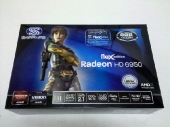
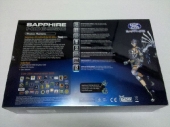
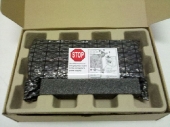
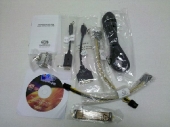
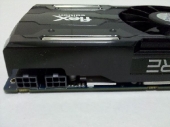
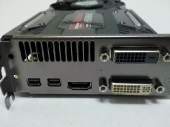
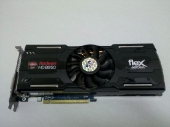
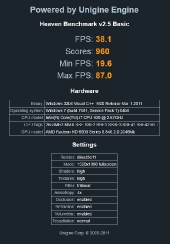
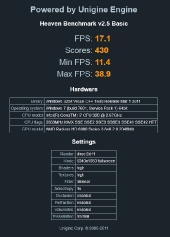

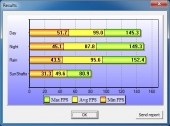
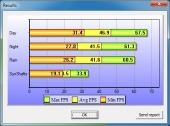
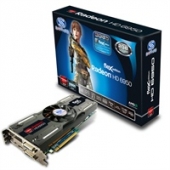

can someone tell me if this graphics card will work in a compaq sr2050nx computer here is computer specs…
PassMark BurnInTest Log file – http://www.passmark.com
========================================================
Date: 09/05/11 01:21:30
BurnInTest V6.0 Pro 1030
(64-bit)Logging detail level: Normal
*** Unlicensed Shareware Version ***
**************
SYSTEM SUMMARY
**************
Windows Vista Home Premium Edition Service Pack 2 build 6002 (64-bit),
1 x Intel(R) Pentium(R) D CPU 2.80GHz,
959MB RAM,
ATI RADEON XPRESS 200 Series,
186GB HDD, 932GB HDD,
CD-RW/DVDRW, CD/DVDRW,
GENERAL
System Name: SR2050NX
System Model: RE476AA-ABA SR2050NX NA680
Motherboard Manufacturer: ECS
Motherboard Name: Asterope3
Motherboard Version: 1.1
BIOS Manufacturer: American Megatrends Inc.
BIOS Version: 3.24
BIOS Release Date: 01/18/2007
CPU
CPU manufacturer: GenuineIntel
CPU Type: Intel(R) Pentium(R) D CPU 2.80GHz
CPUID: Family F, Model 4, Stepping 7
Physical CPU’s: 1
Cores per CPU: 2
Hyperthreading: Disabled
CPU features: MMX SSE SSE2 SSE3 DEP PAE Intel64
Clock frequencies:
Measured CPU speed: 2799.2 MHz
Cache per CPU package:
Trace Cache: 12 K-uops
L1 Data Cache: 2 x 16 KB
L2 Cache: 2 x 1024 KB
MEMORY
Total Physical Memory: 959MB
Available Physical Memory: 423MB
Virtual memory: C:\pagefile.sys (allocated base size 6000MB)
Virtual memory: D:\pagefile.sys (allocated base size 1258MB)
GRAPHICS
ATI RADEON XPRESS 200 Series
Chip Type: ATI Radeon Graphics Processor (0x5A61)
DAC Type: Internal DAC(400MHz)
Memory: 64MB
BIOS: BK-ATI VER008.046I.003.000
Driver provider: ATI Technologies Inc.
Driver version: 8.383.0.0
Driver date: 6-13-2007
Monitor 1: 1024x768x32 75Hz (Primary monitor)
DISK VOLUMES
C: Local drive, NTFS, (931.51GB total, 732.01GB free)
D: Local drive, CHUCK, NTFS, (186.31GB total, 80.82GB free)
E: Optical drive, iHAS324 B
F: Optical drive, CD/DVDW TS-H652L
G: Removable
H: Removable
I: Removable
J: Removable
DISK DRIVES
Disk drive: Model ST3200826AS ATA Device (Size: 186.31GB)
Disk drive: Model WDC WD1002FAEX-00Z3A0 ATA Device (Size: 931.51GB)
OPTICAL DRIVES
E: ATAPI iHAS324 B (CD-RW/DVDRW)
F: TSSTcorp CD/DVDW TS-H652L (CD/DVDRW)
NETWORK
Realtek RTL8139/810x Family Fast Ethernet NIC (Speed: 100Mb/s)
PORTS
PCI Soft Data Fax Modem with SmartCP: COM3 – Modem Device (max Baud rate: 128000)
Parallel port: LPT1
Mouse Port: PS/2 connector
Keyboard Port: PS/2 connector
ATI I/O Communications Processor USB 1.1 OHCI controller
– Dell Dell USB Optical Mouse
ATI I/O Communications Processor USB 1.1 OHCI controller
– Dell Dell USB Keyboard
ATI I/O Communications Processor USB 2.0 EHCI controller
– Generic USB2.0-CRW (SN: 20021111153705700)
**************
RESULT SUMMARY
**************
Test Start time: Mon Sep 05 00:52:37 2011
Test Stop time: Mon Sep 05 01:07:40 2011
Test Duration: 000h 15m 03s
Test Name Cycles Operations Result Errors Last Error
CPU 0 266 Billion PASS 0 No errors
Memory (RAM) 37 19.288 Billion PASS 0 No errors
2D Graphics 6 6167 PASS 0 No errors
3D Graphics 5 11278 PASS 0 No errors
Optical disk (E:) 0 0 FAIL 176 Error while searching for files on optical data disk
Optical disk (F:) 0 0 FAIL 179 Error while searching for files on optical data disk
Sound 3 12.150 Million PASS 0 No errors
Printer 0 0 FAIL 2 Could not send page to printer
Network 1 0 0 FAIL 76 No permission to open RAW network socket
Parallel Port 0 0 FAIL 89 Error loading Parallel port device driver. Check administrator privileges.
Tape 0 0 FAIL 58 Could not access the tape drive selected
USB Plug 1 0 0 FAIL 1 Could not detect USB loopback plug
USB Plug 2 0 0 FAIL 1 Could not detect USB loopback plug
Video Playback 12 157 PASS 0 No errors
Serial Port 1 0 0 FAIL 81 The requested COM port could not be found
Disk (A:) 0 0 FAIL 3 No media detected in drive
Disk (C:) 2 43.603 Billion PASS 0 No errors
update i found my exact board…
http://h10025.www1.hp.com/ewfrf-JAVA/Doc/images/c00783617.gif
http://h10025.www1.hp.com/ewfrf-JAVA/Doc/images/c00783618.jpg
It looks like the board has a PCI-E 1.0 bus. The card should still work, but it will be bottlenecked by the speed of the bus. Not to mention the Pentium D that is in your machine is getting up in years and will definitely be a bottleneck for newer games. Also, if you are running the stock power supply that the machine came with, I highly doubt it will be able to support your card. You will need at least a 750 Watt power supply to be on the safe side.
Please can you confirm that you are correct with your specification where you state 40 stream processes or have you copied/pasted from the Sapphiretech site and not realised this looks wrong?
That section was copied directly from Sapphire’s site. Looks like they have it listed wrong in a few places. It should actually be 1408 Stream Processors. I have updated the article accordingly. Good catch.